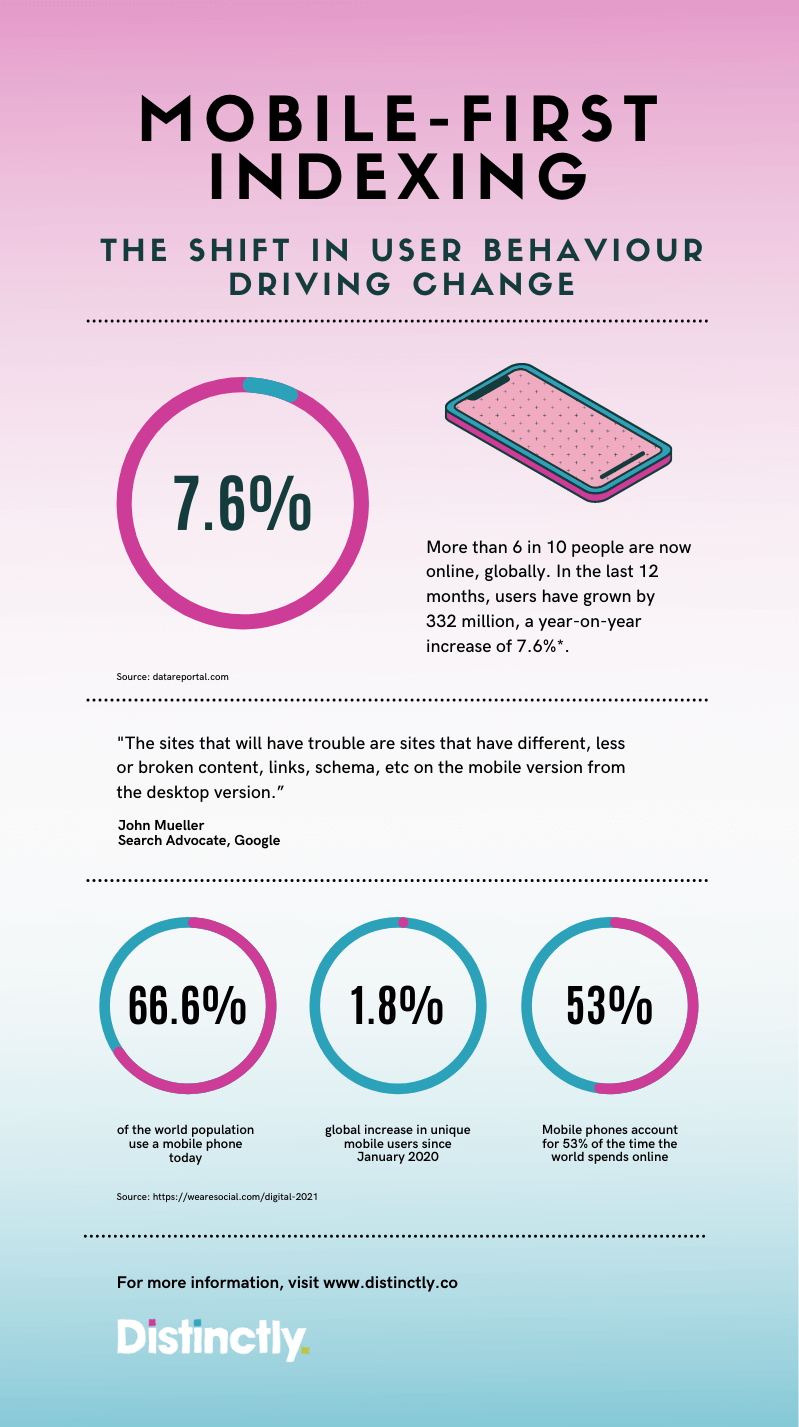Mobile-first indexing: are you ready?
Google is in the final stages of its roll-out mobile-first indexing in direct response to the shift in how we search the web. GWI data shows nine out of 10 internet users go online via their smartphones, spending on average 3hrs and 39 mins per day online on their mobile phones. Globally, the average internet user now spends nearly seven hours per day using the internet across all devices.
We have been planning for Google’s algorithm transition – from ranking the desktop version of a site to a mobile-first approach – for a while. The move for users – from desktop to mobile-first search – has become second nature, but not everyone’s website is well prepared for the change. If you are keen to avoid any negative impact from the latest changes, read our SEO specialists’ recommendations on what you should be paying attention to.
Cameron Sykes, Senior SEO Strategist
The arrival of Core Web Vitals is another reminder of the importance of reviewing your site structure, content, and overall performance on mobile. Google consistently tells us how mobile searches are growing, and this update reaffirms how valuable (and sometimes overlooked) mobile traffic is.
We should all be making sure that we are segmenting traffic performance by desktop and mobile whilst comparing click through-rate, user engagement and conversion data to ensure that the website performs optimally across devices. Remember to routinely crawl your website from a mobile user agent, compare your Desktop & Mobile Google Search Console data, and compare your desktop and mobile performance in Google Analytics. Finally, visit your website on your own mobile and test the user journey!
Lewis Koch, Senior SEO Strategist
It is critical that Googlebot can access and render your content and it is important to ensure metadata and content are consistent throughout, with video and images are optimised for mobile. Do NOT offer different content because there is less space on mobile. Use devices like accordions to hide content form the user but is still available to Google to crawl.
As part of Google’s page experience update expected in June, they will be cracking down on websites that have intrusive interstitials. Interstitials Google has identified as problematic, include:
- Showing a popup that covers the main content, either immediately after the user navigates to a page from the search results, or while they are looking through the page.
- Displaying a standalone interstitial that the user has to dismiss before accessing the main content.
- Using a layout where the above-the-fold portion of the page appears similar to a standalone interstitial, but the original content has been inlined underneath the fold.
Jack Goldsmith, SEO Manager
If websites fail to work on their mobile usability and overall friendliness, visibility on both desktop and mobile devices will be negatively affected. Making sure your primary content is the same across both devices is a key part of Google understanding your website and its offering, thus positively impacting your visibility. There is limited space on mobile devices but it’s important user experience doesn’t suffer as a consequence.
Matt Finch, Senior SEO Manager
Most of the Google index is mobile-first already, industry reports suggest this was at 70% a year ago and we would expect it to be higher now, which means it’s not something to really worry about for most brands.
Essentially, provided you aren’t showing drastically different content across mobile and desktop versions of your site, this shouldn’t be an issue.




